Kinetic CRAC uncovers a role for Nab3 in determining gene expression profiles during stress
- PMID: 28400552
- PMCID: PMC5432031
- DOI: 10.1038/s41467-017-00025-5
Kinetic CRAC uncovers a role for Nab3 in determining gene expression profiles during stress
Abstract
RNA-binding proteins play a key role in shaping gene expression profiles during stress, however, little is known about the dynamic nature of these interactions and how this influences the kinetics of gene expression. To address this, we developed kinetic cross-linking and analysis of cDNAs (χCRAC), an ultraviolet cross-linking method that enabled us to quantitatively measure the dynamics of protein-RNA interactions in vivo on a minute time-scale. Here, using χCRAC we measure the global RNA-binding dynamics of the yeast transcription termination factor Nab3 in response to glucose starvation. These measurements reveal rapid changes in protein-RNA interactions within 1 min following stress imposition. Changes in Nab3 binding are largely independent of alterations in transcription rate during the early stages of stress response, indicating orthogonal transcriptional control mechanisms. We also uncover a function for Nab3 in dampening expression of stress-responsive genes. χCRAC has the potential to greatly enhance our understanding of in vivo dynamics of protein-RNA interactions.Protein RNA interactions are dynamic and regulated in response to environmental changes. Here the authors describe 'kinetic CRAC', an approach that allows time resolved analyses of protein RNA interactions with minute time point resolution and apply it to gain insight into the function of the RNA-binding protein Nab3.
Conflict of interest statement
P.W. was the director and owner of UVO3 that sells equipment for water sterilization. A.L. and R.F. are employees of UVO3. P.W., A.L., and R.F. have been involved in the development of the Vari-X-linker and the filtration unit. All remaining authors declare no competing financial interests.
Figures


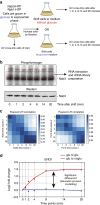
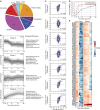
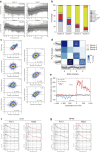

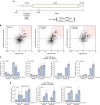
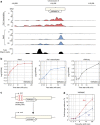


Similar articles
-
Yeast Nrd1, Nab3, and Sen1 transcriptome-wide binding maps suggest multiple roles in post-transcriptional RNA processing.RNA. 2011 Nov;17(11):2011-25. doi: 10.1261/rna.2840711. Epub 2011 Sep 27. RNA. 2011. PMID: 21954178 Free PMC article.
-
PAR-CLIP data indicate that Nrd1-Nab3-dependent transcription termination regulates expression of hundreds of protein coding genes in yeast.Genome Biol. 2014 Jan 7;15(1):R8. doi: 10.1186/gb-2014-15-1-r8. Genome Biol. 2014. PMID: 24393166 Free PMC article.
-
Nuclear RNA Decay Pathways Aid Rapid Remodeling of Gene Expression in Yeast.Mol Cell. 2017 Mar 2;65(5):787-800.e5. doi: 10.1016/j.molcel.2017.01.005. Epub 2017 Feb 9. Mol Cell. 2017. PMID: 28190770 Free PMC article.
-
The Nrd1-Nab3-Sen1 transcription termination complex from a structural perspective.Biochem Soc Trans. 2023 Jun 28;51(3):1257-1269. doi: 10.1042/BST20221418. Biochem Soc Trans. 2023. PMID: 37222282 Free PMC article. Review.
-
Transcription termination and the control of the transcriptome: why, where and how to stop.Nat Rev Mol Cell Biol. 2015 Mar;16(3):190-202. doi: 10.1038/nrm3943. Epub 2015 Feb 4. Nat Rev Mol Cell Biol. 2015. PMID: 25650800 Review.
Cited by
-
Roles of RNA-binding proteins in neurological disorders, COVID-19, and cancer.Hum Cell. 2023 Mar;36(2):493-514. doi: 10.1007/s13577-022-00843-w. Epub 2022 Dec 18. Hum Cell. 2023. PMID: 36528839 Free PMC article. Review.
-
Probing the RNA-Binding Proteome from Yeast to Man: Major Advances and Challenges.Methods Mol Biol. 2019;2049:213-231. doi: 10.1007/978-1-4939-9736-7_13. Methods Mol Biol. 2019. PMID: 31602614
-
Variable penetrance of Nab3 granule accumulation quantified by a new tool for high-throughput single-cell granule analysis.Curr Genet. 2022 Aug;68(3-4):467-480. doi: 10.1007/s00294-022-01234-2. Epub 2022 Mar 17. Curr Genet. 2022. PMID: 35301575 Free PMC article.
-
NCBI GEO: archive for gene expression and epigenomics data sets: 23-year update.Nucleic Acids Res. 2024 Jan 5;52(D1):D138-D144. doi: 10.1093/nar/gkad965. Nucleic Acids Res. 2024. PMID: 37933855 Free PMC article.
-
Advantages and limitations of UV cross-linking analysis of protein-RNA interactomes in microbes.Mol Microbiol. 2023 Oct;120(4):477-489. doi: 10.1111/mmi.15073. Epub 2023 May 10. Mol Microbiol. 2023. PMID: 37165708 Free PMC article. Review.
References
Publication types
MeSH terms
Substances
Grants and funding
LinkOut - more resources
Full Text Sources
Other Literature Sources
Molecular Biology Databases

